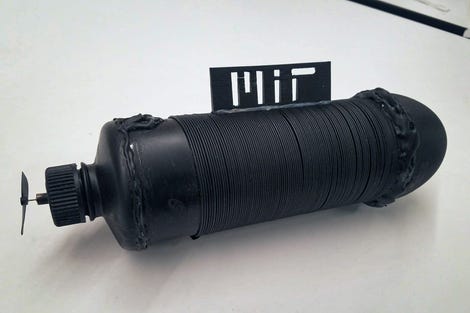
Written by
Liam Tung, Contributor

Liam Tung
Contributor
Liam Tung is an Australian business technology journalist living a few too many Swedish miles north of Stockholm for his liking. He gained a bachelors degree in economics and arts (cultural studies) at Sydney’s Macquarie University, but hacked (without Norse or malicious code for that matter) his way into a career as an enterprise tech, security and telecommunications journalist with ZDNet Australia.
Full Bio
on December 22, 2021
| Topic: Innovation
MIT engineers have built a proof of concept (PoC) flexible lithium-ion battery that one day could be woven into clothing and open a new field of wearable communication, sensing and computational devices.
It said the group of engineers have built the world’s longest flexible fiber battery, measuring 140 meters in length. The aim of the project was to show that the material can be made to any length desired and used in 3D printing projects, for example, as a powered casing for electronic devices.
The group’s work focuses on “fibers as fundamental building blocks of fabrics and 3D-printed objects”, which could allow for the creation of “pervasive multidimensional power systems”. The reason for an arbitrarily long flexible battery is that they’re needed to create 3D power systems. Their approach relies on electroactive gels, particles, and polymers within the protective flexible cladding.
The fibre battery has a demonstrated discharge capacity of around 123mAh, which MIT postdoc Tural Khudiyev, one of the lead authors of the paper, said is enough to charge smartwatches or phones. The fiber itself is a few hundred microns thick and thinner than any other fiber-based batteries.

Credit: MIT
The researchers argue in the paper it “satisfies the requirements of portable electronics systems as it is machine washable, flexible, usable underwater, and fire/rupture-safe.”
A key difference with prior fibre-bases batteries is it’s designed with lithium and other materials inside the fiber that’s protected by an external coating, which makes it stable and waterproof.
Khudiyev says they could “definitely do a kilometer-scale length” flexible, fabric battery.
“When we embed the active materials inside the fiber, that means sensitive battery components already have a good sealing,” Khudiyev explains to MIT News.
The technique is also claimed to allow thinner and more flexible designs than are currently possible and can be woven with standard weaving equipment.
The researchers demonstrated an LED integrated into a Lithium-ion battery in a single fibre, which could be expanded to multiple devices in future.
“When we integrate these fibers containing multi-devices, the aggregate will advance the realization of a compact fabric computer,” says MIT’s Lee.
It also has potential in 3D printing to create custom or 3D shapes, such as casings that provide structure and a power source. They demonstrated a toy submarine wrapped in a 20-meter fibre battery, showing how they could lower the device’s weight and in turn improve its efficiency and range.
The other advantage in 3D printing scenarios is that since the battery material is inside the fiber, there’s no need for additional integration after printing.
Innovation
The most innovative tech we reviewed in 2021
IBM, Samsung say chip breakthrough could give phones ‘week-long’ battery life
Toxic and unethical: One night with Facebook’s Oculus Quest 2
Covid-19: The best at-home rapid test kits
CXO
|
Digital Transformation
|
Tech Industry
|
Smart Cities
|
Cloud